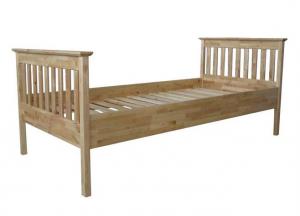Woodworking is an art that requires precision, passion, and the right materials. One of the most versatile materials in a woodworker’s arsenal is plywood. It’s a sheet of wood made from thin layers glued together, and it’s used for a myriad of projects, from furniture to cabinetry. But with so many sizes and types available, choosing the right sheet of plywood for your project can be a daunting task. Fear not! This guide will help you navigate the world of plywood, ensuring you select the perfect fit for your needs.
The Beauty of Plywood
Plywood is not just a practical choice; it’s also aesthetically pleasing. The layers, or plies, of wood can create beautiful patterns and textures, adding a touch of elegance to your projects. Whether you’re a seasoned woodworker or a beginner, plywood offers a canvas for your creativity.
Understanding Plywood Grades
Before you dive into the sizes, it’s crucial to understand the grading system of plywood. Plywood is graded based on the quality of the wood and the presence of defects. The higher the grade, the fewer defects and the better the appearance. For example, ‘A’ grade plywood will have a smooth surface and minimal knots, making it ideal for projects where the plywood will be visible.
The Sizes of Plywood
Plywood comes in standard sizes, but it’s also available in custom dimensions. The most common sizes are 4X8 feet, 5X5 feet, and 4X10 feet. The thickness can vary from 1/8 inch to 3/4 inch. When choosing a size, consider the scale of your project and the amount of plywood you’ll need.
Consider Your Project’s Needs
Think about the specific requirements of your project. If you’re building a large piece of furniture, you might need a full sheet of plywood. For smaller projects, like a jewelry box or a picture frame, a smaller sheet or even a piece cut from a larger sheet will suffice.
Plywood for Different Applications
Different types of plywood are better suited for different applications. For example, marine plywood is designed to withstand moisture, making it perfect for boat building or outdoor furniture. Baltic birch plywood is known for its strength and durability, often used in the construction of skateboards and other high-stress items.
The Importance of Plywood Veneer
The outer layers of plywood, known as veneers, can be made from various types of wood, each with its own unique grain pattern and color. Choosing the right veneer can enhance the visual appeal of your project. If you’re going for a rustic look, consider a veneer with a more pronounced grain, like oak or walnut. For a modern, clean look, birch or maple veneers are excellent choices.
Environmental Factors to Consider
Plywood can be made from sustainably sourced wood, which is an important consideration for environmentally conscious woodworkers. Look for plywood that carries the Forest Stewardship Council (FSC) certification, ensuring that the wood comes from responsibly managed forests.
Budget Constraints
Your budget will also play a role in your decision. Higher-grade plywood is more expensive, but it may be worth the investment if you’re working on a project that will be highly visible or subject to heavy use. On the other hand, if you’re working on a project that will be painted or hidden, a lower-grade plywood might be a more cost-effective option.
Tools and Techniques for Working with Plywood
Once you’ve chosen your plywood, you’ll need the right tools and techniques to work with it. Plywood can be cut, sanded, and finished just like solid wood. However, because of its layered structure, it’s important to take precautions to avoid delamination, such as using appropriate cutting techniques and adhesives.
Storage and Care of Plywood
Proper storage is essential to maintain the quality of your plywood. Store it in a dry, level place, and avoid exposing it to extreme temperatures or moisture, which can cause warping or other damage.
Final Thoughts
Choosing the right sheet of plywood is about more than just finding the right size. It’s about understanding the properties of the material, considering your project’s specific needs, and balancing quality with cost. With a little research and consideration, you’ll be well on your way to selecting the perfect plywood for your next woodworking project. So, roll up your sleeves, and let’s get to work!

